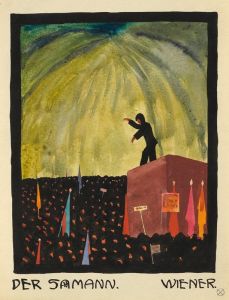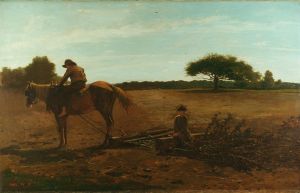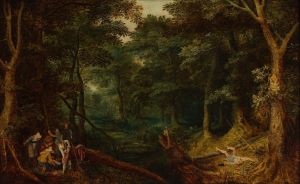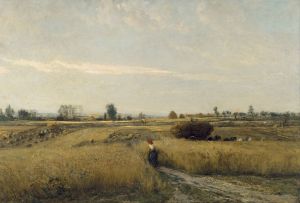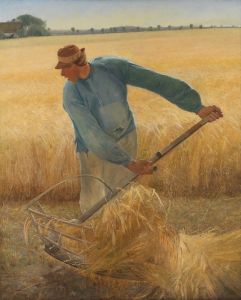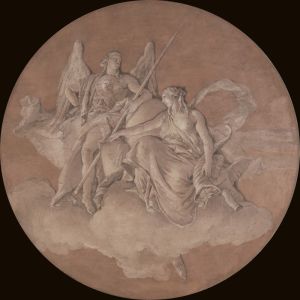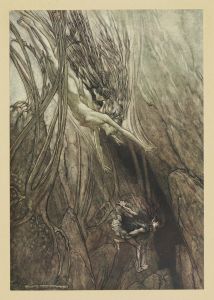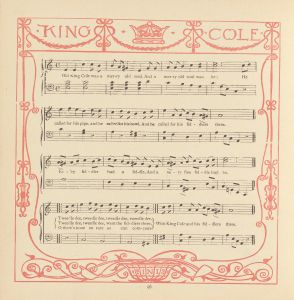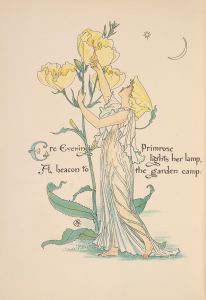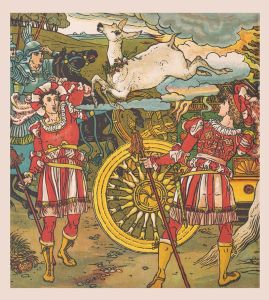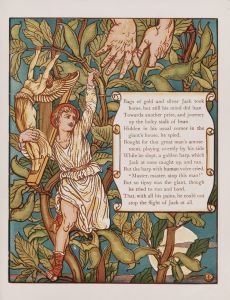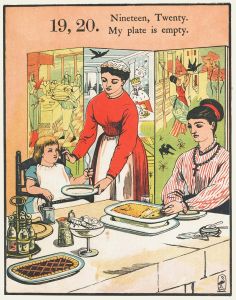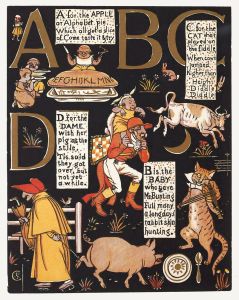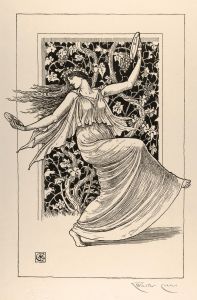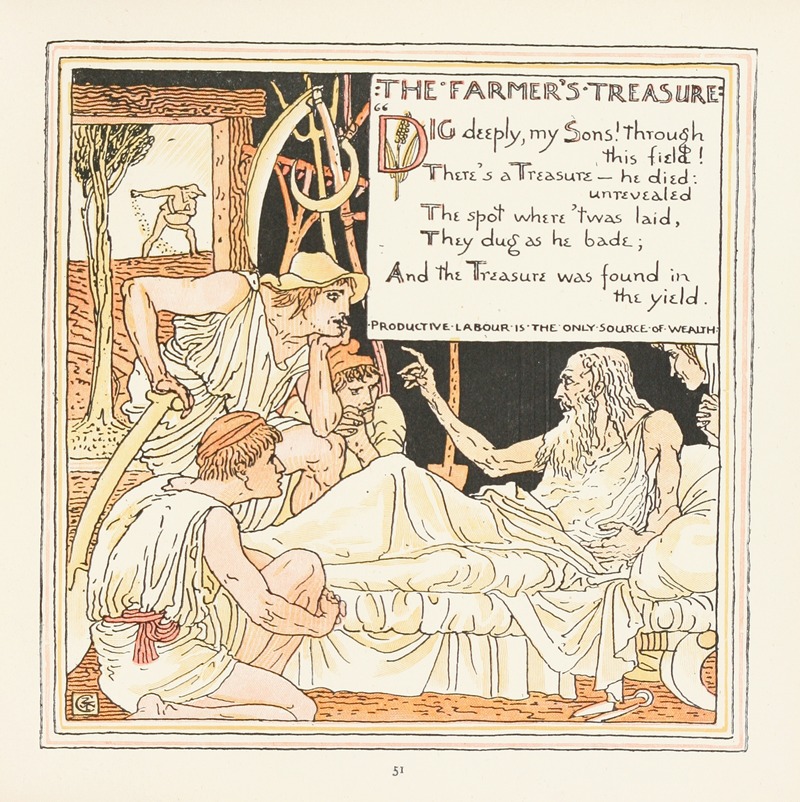
The Farmer’s Treasure
A hand-painted replica of Walter Crane’s masterpiece The Farmer’s Treasure, meticulously crafted by professional artists to capture the true essence of the original. Each piece is created with museum-quality canvas and rare mineral pigments, carefully painted by experienced artists with delicate brushstrokes and rich, layered colors to perfectly recreate the texture of the original artwork. Unlike machine-printed reproductions, this hand-painted version brings the painting to life, infused with the artist’s emotions and skill in every stroke. Whether for personal collection or home decoration, it instantly elevates the artistic atmosphere of any space.
Walter Crane was a prominent English artist and illustrator, known for his contributions to the Arts and Crafts Movement and his innovative work in children's book illustrations. However, there is no widely recognized painting or artwork titled "The Farmer’s Treasure" by Walter Crane. It is possible that this title might refer to a lesser-known work, an illustration, or a misattribution. Without verifiable information or historical records regarding a specific piece by Crane under this title, it is challenging to provide an accurate description or analysis.
Walter Crane's body of work is extensive and varied, encompassing book illustrations, paintings, and designs for decorative arts. He was born on August 15, 1845, in Liverpool, England, and became one of the most influential figures in the late 19th-century art scene. Crane was deeply involved in the Arts and Crafts Movement, which emphasized traditional craftsmanship and the decorative arts as a response to the industrialization of the period.
Crane's illustrations are characterized by their vibrant colors, intricate details, and harmonious compositions. He often drew inspiration from mythology, fairy tales, and classical literature, bringing these stories to life with his unique artistic style. His work in children's literature, particularly, left a lasting impact, as he believed in the educational potential of beautifully illustrated books.
One of Crane's notable contributions was his collaboration with Edmund Evans, a leading color printer of the time. Together, they produced a series of toy books that became immensely popular for their high-quality illustrations and engaging narratives. These books often featured themes of nature, fantasy, and morality, reflecting Crane's belief in art as a means of moral and aesthetic education.
Crane was also an advocate for social reform and used his art to express his political beliefs. He was associated with the socialist movement and created numerous posters, pamphlets, and illustrations that conveyed his vision of a more equitable society. His art often included allegorical elements, symbolizing his ideals and aspirations for social justice.
Despite the lack of specific information on "The Farmer’s Treasure," Walter Crane's legacy as an artist is well-documented and celebrated. His influence extended beyond his lifetime, inspiring future generations of artists and illustrators. Crane passed away on March 14, 1915, but his work continues to be studied and admired for its artistic innovation and social relevance.
In summary, while there is no specific information available on a work titled "The Farmer’s Treasure" by Walter Crane, his overall contributions to art and illustration remain significant. His dedication to the Arts and Crafts Movement, children's literature, and social causes highlights his multifaceted talent and enduring impact on the art world.





